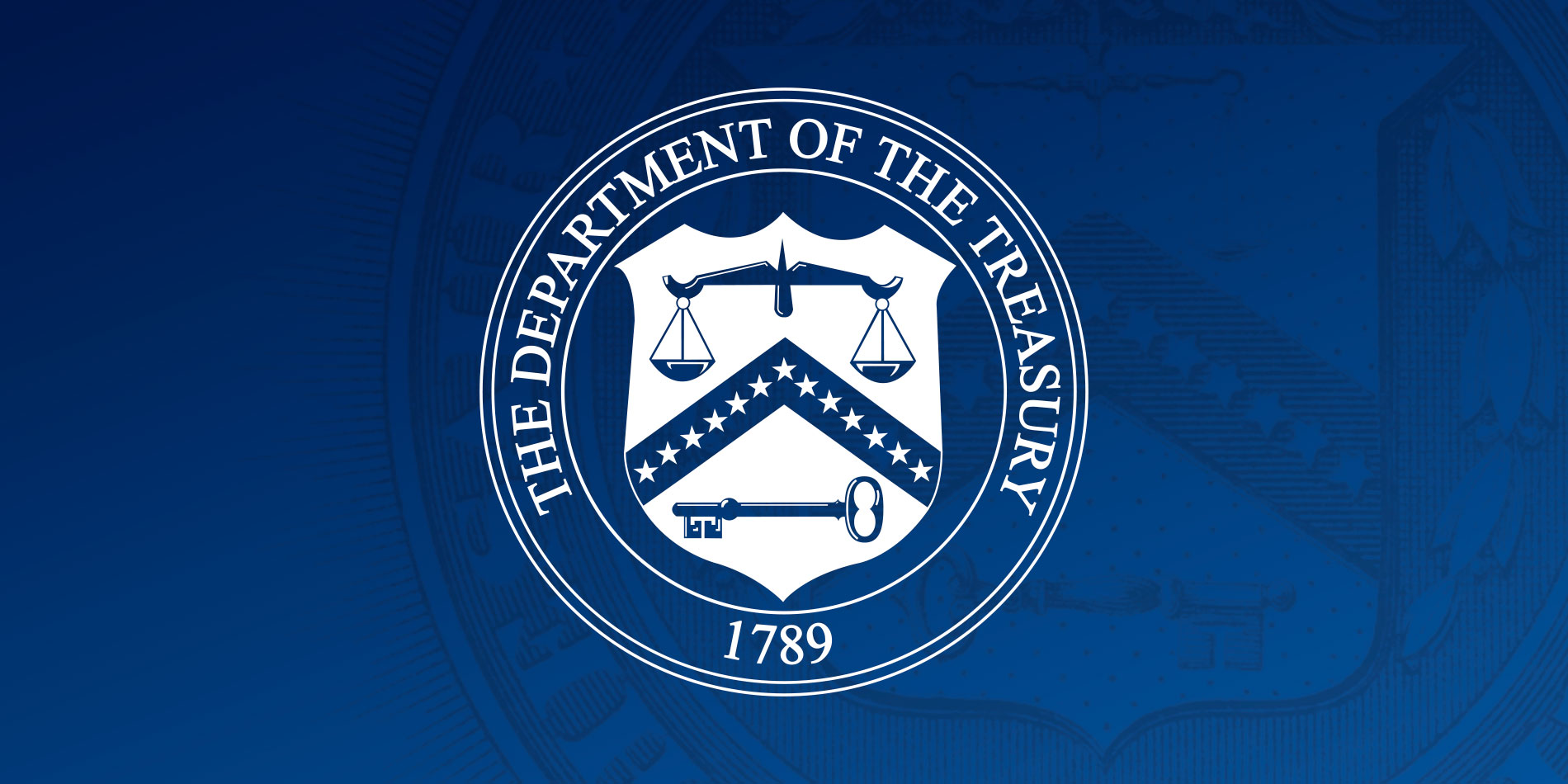As Prepared for Delivery
Introduction
Good afternoon and thank you for having me here at the New York Fed’s annual primary dealer meeting. The U.S. Treasury market is the deepest and most liquid market in the world. I’m glad to be here to speak with you, the primary dealers, because of the critical role you play in making this market that underpins the global financial system so deep and so liquid, both through your role as pro rata bidders in Treasury auctions and your market making capabilities.
The Treasury market serves as the benchmark risk-free yield curve and as a source of safe and liquid assets for a broad range of investors. But its primary role is its reason for existing in the first place: financing the U.S. government. Because of the criticality of the Treasury market, and in light of disruptions that have occurred in recent years, the official sector has been working together to enhance the resilience of the market. Much of this work has been coordinated through the Inter-Agency Working Group on Treasury Market Surveillance or IAWG, which is made up of staff from Treasury, the New York Fed, the SEC, the CFTC, and the Fed Board of Governors.
The IAWG’s work over the past three years has been structured as five workstreams: improving the resilience of market intermediation, improving data quality and availability, evaluating expanded central clearing, enhancing trading venue transparency and oversight, and examining effects of leverage and fund liquidity risk management. First, I’ll briefly mention a few initiatives led by other agencies where there has been recent important progress, and then, I’ll go a bit deeper into Treasury-led initiatives with a particular focus on the buyback program that we announced just last week.
SEC Central Clearing and Dealer Rule
One set of initiatives to enhance the resilience of the Treasury market has been the SEC’s recently adopted rules on central clearing and dealer definition. First, on central clearing, the SEC adopted a rule last year to improve central counterparty risk management and expand central clearing. The rule requires Treasury securities transactions between clearinghouse members and broker-dealers, as well as those executed on Alternative Trading Systems (ATSs) and Inter-dealer Broker (IDB) platforms operated by clearinghouse members, to be cleared by the end of 2025. Most repo transactions will need to be cleared by June 2026. There is work underway to consider a range of models for non-member clearing and develop the necessary documentation to make these changes. Expansion of central clearing could have a range of benefits for the Treasury securities market, including standardized risk management requirements, which can enhance the market’s resilience to shocks. Central clearing also helps to net down gross exposures across participants, reducing firms’ exposures while positions are open as well as reducing the flows required at settlement.
On the dealer rule, the SEC adopted rules to further define the phrase “as a part of a regular business” in order to identify certain activities that would require firms to register as dealers. The rule identifies two qualitative factors related to liquidity provision through market-making as criteria for dealer registration, with the primary effect expected to be registration of additional Principal Trading Firms (PTFs). As the SEC has stated, advancements in electronic trading across securities markets have led to the emergence of certain market participants that play an increasingly significant role in liquidity provision. However, some of these market participants, despite engaging in liquidity-providing activities, and despite their significant share of market volume, are not registered as dealers. As a result, investors lack important protections, and the obligations and regulatory oversight that promote market resiliency and stability are not being consistently applied to firms engaged in similar activities. Consistent regulatory oversight in this area will support market resiliency and stability and enhance investor protection across the U.S. Treasury market and other securities markets.
Treasury-Led Initiatives
OFR Non-Centrally Cleared Bilateral Repo
Next, I wanted to highlight recent progress led by Treasury’s Office of Financial Research (OFR). Earlier this week, OFR finalized a rule to establish ongoing collection of data on transactions in the non-centrally cleared bilateral repo market. This market represents one of the largest remaining data gaps for the official sector on Treasury market activity. Filling this gap will provide data on dealers’ counterparties and the terms of the trades, which should help the official sector to better assess the vulnerabilities in this market. The collection will be complementary to the SEC’s rule on expanding central clearing as it will give the official sector a good sense of how repo activity is shifting over time between bilateral and centrally cleared, and what repo trades may remain outside of central clearing.
I will focus the remainder of my remarks today on a few efforts a bit closer to my office at Treasury: (1) expanding transparency of Treasury market transactions and (2) buybacks.
On-The-Run Transparency
First, I’ll provide a brief recap of our efforts to-date to improve data and transparency in the secondary market. Almost 10 years ago now, on October 15, 2014, the Treasury market experienced an unusually high level of volatility and a very rapid round-trip in prices. With no apparent catalyst, in the span of 15 minutes, the 10-year yield dropped 16 basis points and then rebounded.[1] This event, and the associated challenges in analyzing its causes and the important market trends it underscored, catalyzed a series of efforts in the official sector. Perhaps the most significant of those efforts was to establish, initially for the official sector, a centralized record of transactions in the Treasury secondary market. Accordingly, in 2017, the Financial Industry Regulatory Authority (FINRA) began collecting transaction data from its members through the Trade Reporting and Compliance Engine (TRACE) and providing that data to the official sector.
After analyzing and improving the data, we decided it was appropriate to begin providing public transparency based on this new data source. Our approach here has been careful and measured, taking incremental steps to maximize the benefits of transparency while avoiding any potential harm to the market. And so, in March 2020, FINRA began to release weekly aggregate volume data to the public. Subsequently, in 2022, the SEC approved a FINRA proposal to increase the frequency of aggregate data releases from weekly to daily and to include additional statistics such as daily trade counts and average prices. FINRA began publishing this data in February 2023.
In 2022, Treasury published a request for information on the potential benefits of additional transparency in the Treasury market along with scenarios for what additional transparency might look like. We also sought input from both the primary dealers and the Treasury Borrowing Advisory Committee (TBAC). Informed by these discussions and our own analysis of the data, Treasury proposed to release transaction-level data for on-the-run nominal coupons, with end-of-day dissemination, subject to appropriate caps on large trades. These transactions represent more than half of all trading volume across Treasury securities, and approximately 75% of trading volume in fixed rate nominal coupon securities. This February, the SEC approved a rule change that would allow FINRA to release this data each day subject to trade size caps of $250 million for two-, three-, and five-year Treasuries, $150 million for seven- and ten-year Treasuries, and $50 million for twenty- and thirty-year Treasuries.[2] About 6 weeks ago, FINRA began publishing this transaction level data set at the end of each day. Treasury is still evaluating the impact of this important development.
Overall, Treasury has sought to expand transparency in a gradual and calibrated way – to quote Under Secretary for Domestic Finance Nellie Liang, we will “walk, not run” and in recent years we’ve been walking steadily down this path and have made important progress. In line with this approach, once we have had time to evaluate the effects of disseminating on-the-run transactions, we’ll consider possible next steps for additional transparency.
Treasury Buybacks
I will turn now to a bit more detail on Treasury’s recent announcement on buybacks. The formal launch of Treasury’s buyback program coincided with the May quarterly refunding just last week. In the refunding policy statement, we announced that Treasury would conduct its first regular buyback operation in the four-week to two-year nominal coupon sector on May 29th. In this liquidity support buyback, we are willing to purchase up to $2 billion across 20 CUSIPs that will be announced closer to the operation. Before I discuss further details of our recent announcement, I’d like to share some of the history behind Treasury buybacks.
The idea of a sovereign debt buyback is not new. In the Treasury market alone, there have been two major debt redemptions in the past century. First, throughout the 1920s, during a time of consistent budget surpluses, Treasury redeemed its debt through a variety of different means including open market purchases on the New York Stock Exchange, reverse auctions, and tender offers.[3] Approximately eighty years later, between March 2000 and April 2002, also during a period of budget surpluses, Treasury undertook buybacks to avoid cuts to auction sizes that might have adversely affected market liquidity. In these buybacks, Treasury redeemed about $68 billion of securities through 45 operations.
At a high level, the “liquidity support” buybacks announced earlier this month share the same ultimate goal as the early 2000s buyback program: supporting Treasury market liquidity and market-functioning. However, the mechanism for liquidity support is quite different. While the early 2000s program focused on maintaining adequate benchmark auction sizes so that on-the-runs would stay liquid, the current liquidity support buybacks aim to support liquidity in off-the-runs by providing a regular, predictable opportunity to sell them back to Treasury. Our hope is that the existence of such an opportunity will encourage active liquidity provision in these securities.
While Treasury’s “liquidity support” buybacks are similar the buybacks of the early 2000s, our planned “cash management” buybacks likely have more in common with the buybacks of the 1920s, which applied excess revenues to the purchase of Treasury securities trading in the secondary market.[4] Dealers here today will be well-aware that the sizes of Treasury bill auctions ebb and flow throughout the year due to the “lumpiness” of fiscal flows that are concentrated around quarterly tax payment dates. Cash management buybacks will provide us with the ability to use these “lumpy” cash balances around tax season to make targeted purchases at the front-end of the curve to reduce future concentrated maturities and avoid potentially disruptive cuts to bill supply. Though Treasury does not plan any cash management buybacks between now and the next quarterly refunding at the end of July, we may conduct them later in 2024, depending on market conditions.
As announced at the May quarterly refunding, Treasury will initially seek offers to purchase up to $2 billion of nominals or $500 million of TIPS for “liquidity support” purposes, cycling through nine “buyback buckets” – seven for nominals and two for TIPS. These buyback operations will start on May 29th and are planned to occur with a cadence of one operation per week through July 24th and will generally take place on Wednesdays between 1:40 and 2:00 p.m. These operations will initially be limited to 20 CUSIPs due to settlement process limitations. However, we expect that these limitations will be short-lived and in the coming months plan to remove all restrictions on CUSIP count and increase our liquidity support purchase maximums to the $30 billion per quarter level that we previously communicated. We aim to regularly update the market on our progress and will provide tentative operation calendars at each quarterly refunding.
Treasury expects liquidity improvements resulting from buybacks to flow through three channels. First, dealers should feel more confident making markets in off-the-run securities, as they will have Treasury as a regular and predictable buyer. Second, Treasury buybacks are expected to be “liquidity events” around which additional trading activity is likely to take place. And third, dealers may use buyback operations to free up balance sheet allocated to less-liquid positions at a fair price.
Treasury has no intention of buying back securities that are already in high demand, as these securities do not require liquidity support. Specifically, we will not seek offers for a security that meets one or more of the following criteria:
- Any security that has not passed its first payment date. This rule serves to exclude all on-the-runs and some near on-the-runs,
- Securities that are reasonably likely to be the cheapest-to-deliver for a futures contract, or
- Securities that are trading significantly special in repurchase agreement markets or are otherwise in exceptional demand compared with similar issues.
Relatedly, on the topic of price, let me be clear: Treasury aims to be a price sensitive buyer. We may buy back less than the stated maximum, or nothing at all, in any operation depending upon the quality of offers that we receive. We will evaluate the offers we receive based on their proximity to prevailing market prices at the close of the operation, as well as measures of relative value.
Regarding the operational mechanics, Treasury buybacks will use the same FedTrade system that the New York Fed uses for its purchases of Treasury securities, which should reduce operational frictions for dealers. However, there are a few important differences between Treasury’s buybacks and the New York Fed’s operations that I would like to highlight. One key difference is that the results of Treasury’s operations are published on TreasuryDirect.gov rather than the New York Fed’s website. Another difference is the cadence of operations. Treasury publishes its tentative schedule far in advance at each quarterly refunding. Also, we will publish two lists of eligible CUSIPs for each buyback: one “preliminary list” on the day before an operation followed by a “final list” on the morning of the operation itself.
Another difference between the Fed’s purchases and Treasury’s buybacks worth highlighting is purchase limits. The Fed’s purchase limits are based on a sliding scale that caps CUSIP-level SOMA portfolio ownership at 70 percent. Treasury’s intention with buybacks is to align with the Fed’s existing policy around 70 percent ownership, so the first step in constructing Treasury’s purchase limit is to determine how much of an issue Treasury can purchase without pushing the SOMA ownership share over 70 percent.
Treasury also recognizes that the total dollar amount trading in the market is important for liquidity. For this reason, we have applied an additional rule to our purchase limit calculation to ensure that the tradable float, in dollars, remains above $10 billion for nominal coupon securities and $5 billion for TIPS after any Treasury buyback operation is completed. Additional details of both our purchase limit calculation and security exclusion approach can be found in a recent presentation that Treasury made to TBAC that has been posted on the quarterly refunding webpage.[5]
Although Treasury’s buybacks are quite similar to auctions with the direction of the trade reversed, there are a few important differences between auctions and buybacks that I would like to underscore for this group. First, buybacks use a multiple-price reverse-auction format, while auctions are awarded at a single-price. Additionally, in contrast to bidding in Treasury auctions, pro-rata participation in Treasury buybacks is not part of the expectations for primary dealers. While Treasury would prefer primary dealers “acknowledge” the operation in FedTrade, dealers are not obligated to submit offers in every operation.
Finally, on the topic of buyback financing, I would like to reiterate that amounts spent to purchase securities will be treated like any other source of borrowing needs for debt management purposes. Although Treasury will not attempt to directly align additional issuance with securities bought back at a specific tenor, we expect that net impact of buybacks on the maturity profile of the debt will be limited.
Conclusion
Over the past several months, Treasury and other IAWG member agencies have made great strides toward our shared goal of fostering a safe, transparent, and liquid Treasury market. On the data front, disclosure of on-the-run transaction data through TRACE will increase the public’s visibility into the cash market, while the OFR’s data collection rule will allow the official sector to monitor risks in the repo market. On the regulatory side, the SEC’s dealer-definition and clearing rules will reduce risk across the financial system. Finally, on the markets side, Treasury buybacks will both support off-the-run liquidity and provide Treasury with an essential tool to manage its cash position. While in their early days, these efforts leave us headed in the direction of a safer and more liquid Treasury market. Thank you for joining us here today and for your continued support of the Treasury market as primary dealers.
###
[1] U.S. Department of the Treasury, Board of Governors of the Federal Reserve System, Federal Reserve Bank of New York, U.S. Securities and Exchange Commission, and U.S. Commodity Futures Trading Commission, Joint Staff Report: The U.S. Treasury Market on October 15, 2014 (July 13, 2015), available at: https://www.treasury.gov/press-center/press-releases/Documents/Joint_Staff_Report_Treasury_10-15-2015.pdf.
[2] https://www.finra.org/rules-guidance/notices/24-06
[3] Buybacks in Treasury Cash and Debt Management (newyorkfed.org)
[4] Buybacks in Treasury Cash and Debt Management (newyorkfed.org)
Official news published at https://home.treasury.gov/news/press-releases/jy2328


